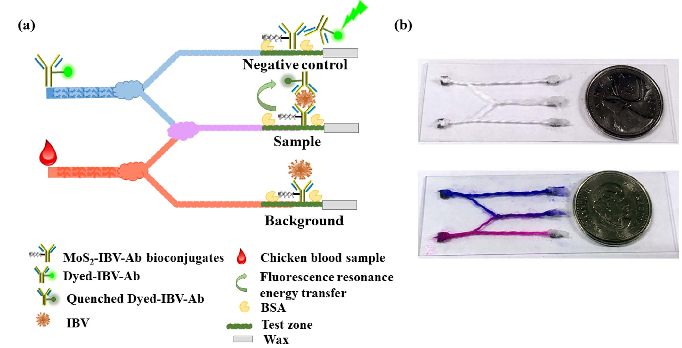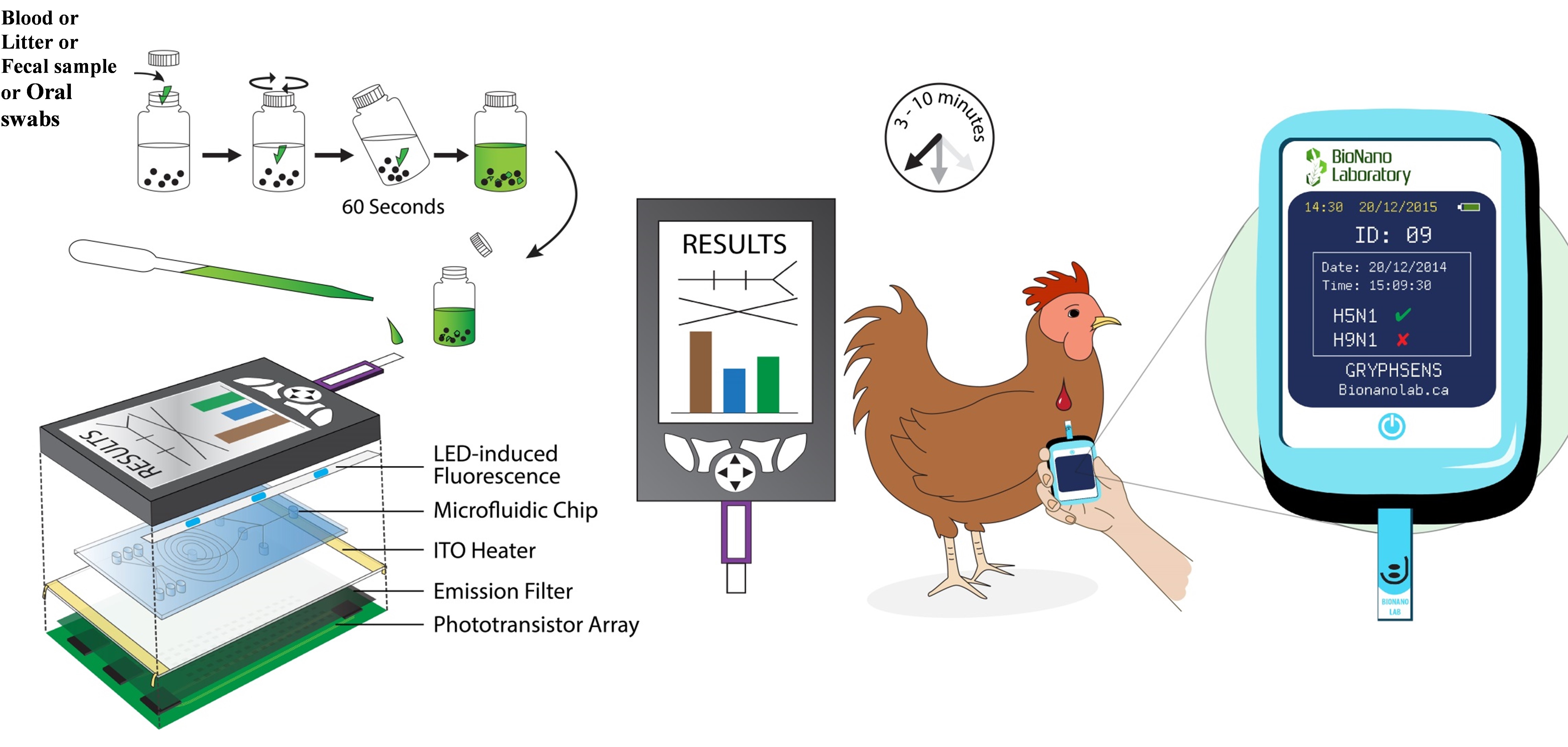



Coronavirus detection in poultry by cotton thread
The novel coronavirus has certainly put the world in defensive mode as media outlets continue their non-stop coverage of new daily outbreaks around the world, and the World Health Organization (WHO) has just recently categorized it as pandemic.Meanwhile, laboratories and disease prevention centres are working around the clock to find methods of early detection and immunisation to help thwart the effects this latest outbreak has had on world economies, financial markets, transportation and tourism.
Currently quarantine is the only means of attempting to contain the virus. News reports of cruise ships becoming massive isolation wards has undoubtedly put fear in many vacationers to cancel or postpone travel until the situation begins to improve. China has embarked on the world’s first public health experiment of this magnitude by closing off entire cities and regions to keep the outbreak localised, thereby affecting millions of people. Many parts of the world have enacted unprecedented travel bans, while Russia has completely closed its border with China, and the US has banned travel from select EU countries.
The opinion is unanimous that the Chinese city Wuhan is ground zero for novel coronavirus and was transmitted to a human through eating infected meat. It would then seem obvious that the first detection source should be animals raised for human consumption. Our team has developed a mechanism that uses treated cotton thread as the mechanical means for detection.
The bionano team has developed the device with encouraging lab results. “The next step is for clinical trials to provide a mechanism for livestock owners and farmers to test animals in the barn and curtail any outbreaks originating from flocks. Stopping contamination at the source is far better than it turning up in society, which metaphorically is like closing the barn door after the horse has escaped.”

© Suresh Neethirajan
The thread’s wicking action is a principal reason for it being the substrate to allow blood or saliva to travel from one end of the thread to the other, which has been previously treated with a sensitive chemical element. Electromagnetic forces separate the virus from the medium and allow it to attach to the element for detection. When the virus attaches to the specific element, there’s a glow or fluorescence that can be seen even with the naked eye, with visible intensity increasing as the virus concentration becomes larger.
The coronavirus is not new to medicine and was responsible for the SARS outbreak in 2003 and the MERS outbreak in 2012. The current strain of the virus, with the scientific label H5N1 or COVID-19 as coined by WHO, has in common with other coronaviruses the longest genome of any known RNA-based viruses, or in other words, has the propensity to continuously mutate and alter its composition to form another strain that can cause a related but unique outbreak. It’s obvious that health scientists have their work cut out for them.
Before now, nanotechnologists have discovered important properties of several elements including their ability to attract viral bodies, such as the coronavirus, making them detectable. This attraction is attributed to the profusion of electrons over a large surface area with such elements as cadmium, selenium and arsenic. However, these elements also carry a toxic factor that makes using them undesirable.
Zirconium, however, shows the properties of the earlier mentioned elements without the high levels of toxicity and without being a biohazard material. Very small element parts, or nanoparticles, have been used in various applications that require minute amounts of the element to be attached to a particular substrate. Even smaller pieces or nanocrystals, known as quantum dots, procured through autoclaving have further increased the element’s versatility and requiring minute amounts of the organic fluid being tested.
To put the quantum dots efficacy to the test, the research team focused on an insidious killer of poultry, the infectious bronchitis virus (IBV), that like other viruses consistently mutates making detection and control difficult. In the lab, antibodies to the virus were electrostatically attached to the quantum dots and nanoparticles, so that when the two were brought together in the presence of the virus a photoluminescence occurs, yellow in daylight and blue under UV-light. The intensity of this reaction is controlled by the concentration of the virus antibodies.
Tests were then conducted on other virus strains, including novel coronavirus, with each type displaying a significant difference of fluorescence intensity indicating a way for identification and actually proved to be more sensitive than traditional, more expensive methods. Neethirajan’s team took the discovery further to develop an immunosensor that would be low cost, sensitive and accurate for use on the front lines globally where viruses can proliferate, in particular poultry operations.
A device was developed that resembles a fork with two handles and three tines and made from cotton thread. One handle is immersed with the dyed antibody wicking down to one tine or control zone but is devoid of any virus, the middle tine is the test zone and has the virus, antibody and dyed antibodies attached to the chemical, and the last one is the background zone with the virus but without dyed antibodies. The tines are knotted together with the handles and their ends dipped in wax.
To provide some rigidity, a braided cotton cover encases the threads although other formats are under study including a proposed bandage design. To keep the biosensor affordable, even for small poultry operations, the team treated threads with the low-cost compound molybdenum disulfide that is extremely sensitive to detecting stained virus antibodies as they react with the virus. After 10 minutes of exposure to the virus, the results are easily detected with a fluorescence microscope, a handheld phone or even the naked eye.
In the absence of a virus, any visible fluorescence doesn’t occur because the molybdenum disulfide doesn’t detect any electron exchange without antigens prompting an antibody reaction. However, the opposite is true when a contaminated body fluid sample is introduced and becomes highlighted with dyed antibodies coated on the molybdenum disulfide surface as they react with the virus. Any fluorescence becomes more intense with a higher concentration of virus and antibodies.
The specificity of the cotton thread test for poultry virus was validated using conventional laboratory methods and the level of success concluded that the biosensor is an easily manufactured, inexpensive, accurate and simple method to detect a threat like novel coronavirus early in its incubation period at the source. The magnitude of this device is gigantic as it would effectively manage poultry stocks and put the brakes on a potential pandemic and keep financial world markets and industries intact.

“Any immunisation to novel coronavirus is projected to be from a year to 18 months away. This outbreak may possibly have to be weathered the best our public health systems are capable of handling. However, by early identification of such a virus in the future, the catastrophic results can be curtailed and it would also give our leading medical labs a foot up in developing immunisation by alerting them to a virus strain before it becomes an issue.”
Although this coronavirus is similar to SARS and MERS, it acts a little differently because it has no observable features or ailments in its initial contagious stage. It’s also different from the earlier coronaviruses because COVID-19 more accurately resembles a severe cold. It’s time to be even more observant on a personal level by washing hands thoroughly and using alcohol sanitisers, not touching your face, covering your mouth and nose when sneezing or coughing and being aware of your immediate surroundings.
In the meantime, travel bans and quarantines will continue and it seems health screenings will be a part of airport landscapes for a while. It’s debatable when COVID-19 will end, but it has been said that weather could terminate its spread, as it did with SARS. Pathologists report that coronaviruses don’t flourish in sunlight, heat or higher humidity. Once the warmer months arrive in the northern hemisphere, the incidence of the virus could decline. No one can predict how the coronavirus may mutate next, but the versatility and flexibility of this cotton thread biosensor from may have us all breathing a little easier in the future.









